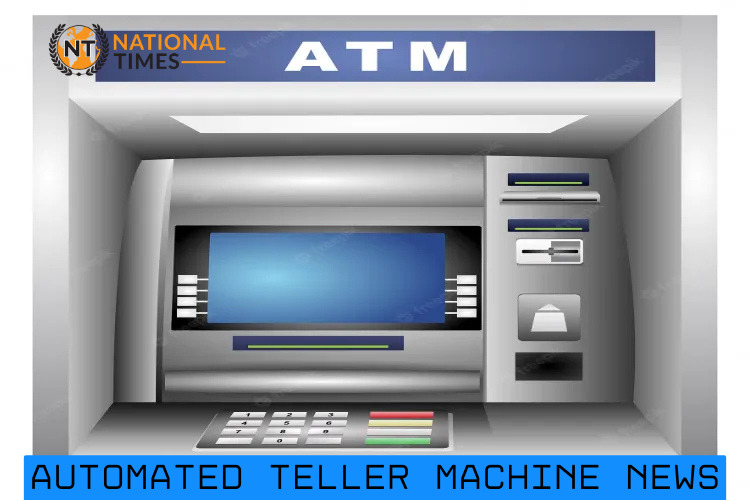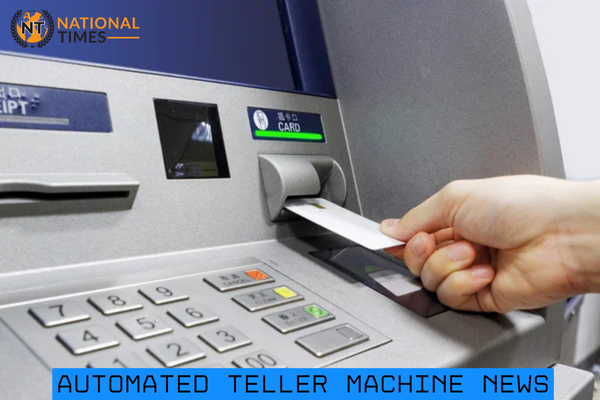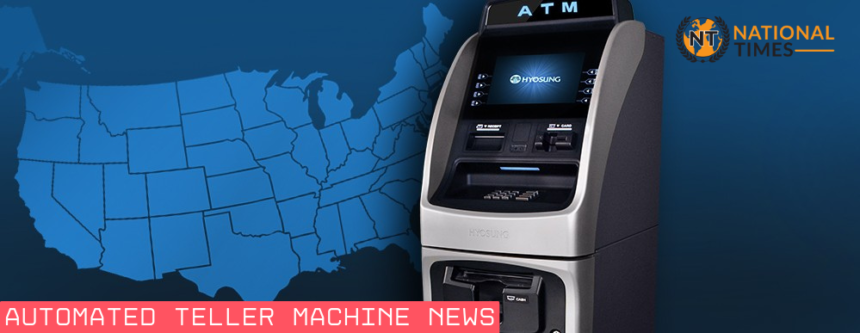In recent years, automated teller machine news (ATMs) have played an important role in how we access cash and conduct financial transactions. These machines are used by millions across the United States to withdraw cash, check balances, and perform various other banking activities. However, as the financial landscape evolves, so do the changes in ATM technology, fees, and usage. This article explores the latest developments in ATM news in the United States, including how they work, the changes in ATM fees, the introduction of new technologies, security concerns, and what the future holds for these machines.
What Are ATMs and How Do They Work?
An automated teller machine news (ATM) is a specialized computer used by banks and other financial institutions to allow customers to perform various financial transactions. It enables users to withdraw cash, deposit money, transfer funds between accounts, check account balances, and even pay bills, all without the need for a human teller. ATMs are designed to provide 24/7 access to banking services, making them a convenient alternative to visiting a bank branch.
The way ATMs work is simple but highly efficient. When you insert your ATM or debit card into the machine and enter your PIN (Personal Identification Number), the machine communicates with your bank’s central computer system to verify your identity and ensure that you have enough funds for the transaction. Once the information is verified, the machine either dispenses cash or performs the requested service.
Recent Changes in ATM Fees
In recent years, ATM fees in the United States have been steadily increasing, causing concern among many users. These fees are typically charged when you use an ATM that is not operated by your bank. Depending on the bank and the machine, fees can range from $2 to $5 or more for each transaction. In addition to the fees imposed by the ATM operator, some banks also charge their customers a fee for using ATMs outside of their network.
These rising fees have sparked discussions about the fairness and transparency of ATM pricing, especially considering that many people rely on these machines for basic banking services. Some financial experts believe that the increased fees are a result of financial institutions trying to offset the cost of maintaining and upgrading ATM networks, while others see it as a way for banks to maximize profits.
New Technologies in ATMs
The introduction of new technologies has significantly impacted the ATM industry. The evolution of these machines has led to more advanced features, improving both user experience and security. For example, many modern ATMs now offer touchless transactions, allowing users to complete their banking tasks without physically touching the machine. This became especially important during the COVID-19 pandemic when hygiene concerns were at an all-time high.
Moreover, biometric authentication methods, such as fingerprint and facial recognition, are being integrated into ATMs, making it easier and safer for customers to access their accounts. These technologies aim to reduce fraud and provide a more personalized experience for users.

Why Are ATM Fees Increasing?
ATM fees have been on the rise in recent years, which is a major concern for consumers. Several factors contribute to this trend. One reason is that maintaining and operating ATMs is costly for financial institutions. As ATMs are used by many people daily, the automated teller machine news need to be regularly serviced and updated, which requires investment in infrastructure and technology. The increased operational costs are then passed on to the consumers in the form of higher fees.
Another factor contributing to higher fees is the growing trend of fee-based financial services. Many banks are introducing new products or services that come with additional charges, and ATM usage is no exception. Additionally, the rising costs of security measures, such as fraud detection systems and insurance to protect against theft, also contribute to the increased fees.
Which Cities Have the Highest Fees?
ATM fees can vary widely depending on where you are in the United States. Major cities like New York, Los Angeles, and San Francisco are known for having some of the highest ATM fees in the country. In these cities, you may encounter both high fees from the ATM operator and additional charges from your bank if you use an out-of-network machine.
Some rural areas, on the other hand, tend to have lower fees, but access to ATMs may be more limited. The convenience of using ATMs in big cities often comes at a higher cost, which is something consumers need to be mindful of when choosing which ATMs to use.
How Can You Avoid Paying Extra Fees?
To avoid paying high ATM fees, consumers can take several steps. One option is to stick to using ATMs that are operated by your own bank or credit union, as these machines typically don’t charge any fees for withdrawals. Another strategy is to use ATM networks that are part of larger networks, like the Allpoint or CO-OP Network, which allow you to access machines with no fees.
In some cases, banks offer accounts that reimburse ATM fees, making it possible to withdraw cash from any ATM without incurring charges. It’s also a good idea to plan and withdraw larger sums of cash when you can, reducing the number of times you need to use an ATM and thus minimizing the fees.
Here’s a basic Bio Table structure for you:
| Field | Details |
|---|---|
| Name | [Your Name] |
| Age | [Your Age] |
| Occupation | [Your Profession] |
| Location | [City, Country] |
| Skills | [List of Relevant Skills] |
| Interests | [Your Interests or Hobbies] |
| Experience | [Relevant Work/Professional Experience] |
| Education | [Your Educational Background] |
| Contact Info | [Email/Phone, etc.] |
Feel free to modify this as per your needs! Would you like more specifics on any of these fields?
The Decline in Number of ATMs
Over the years, there has been a noticeable decline in the number of ATMs across the United States. Several factors have contributed to this decline, including the rise of mobile banking, online financial services, and the increasing use of debit and credit cards for everyday purchases. With fewer people relying on cash, the demand for ATMs has decreased.
As a result, many financial institutions have started to shut down or reduce the number of ATMs in their networks, particularly in areas where cash usage is low. While this trend has made it more difficult for some people to access cash, it has also led to a more streamlined banking system that relies heavily on digital banking solutions.
Security Concerns with ATMs
ATM security is a growing concern for both consumers and financial institutions. As ATMs become more advanced and widely used, they also become more targeted by criminals seeking to steal funds or commit fraud. Common security threats include skimming devices, which capture card information, and malware that targets ATMs to steal money from users’ accounts.
To combat these risks, many financial institutions have implemented enhanced security measures, including encrypted communication between ATMs and banks, automated teller machine news real-time fraud detection systems, and cameras to monitor ATM locations. However, despite these improvements, ATM users are still advised to take precautions when using these machines, such as covering the keypad when entering a PIN and being aware of their surroundings.
The Future of ATMs
The future of ATMs is likely to be shaped by new technologies and the ongoing evolution of the financial landscape. As cash usage continues to decline, ATMs may become less common, especially in urban areas where digital payment methods are more widely used. However, ATMs will likely remain essential in certain regions and for individuals who prefer using cash.
The integration of emerging technologies, such as artificial intelligence (AI) and blockchain, could also have a significant impact on how ATMs function. automated teller machine news For example, AI could help automate certain banking tasks, while blockchain could offer more secure and efficient transaction methods.

Will Cash Become Obsolete?
While digital payments and mobile banking are growing in popularity, it’s unlikely that cash will disappear entirely shortly. In many parts of the United States, particularly rural areas, cash remains a preferred method of payment. Additionally, there are still communities where access to banking services is limited, making ATMs an essential tool for financial transactions.
That said, cash usage is on the decline, and the role of ATMs may diminish as more people adopt cashless methods of payment.
How Will ATMs Evolve with Technology?
As technology continues to advance, ATMs will evolve to meet the needs of modern consumers. Future ATMs could feature even more advanced security features, such as voice recognition and advanced biometric scanning. These machines may also become more integrated with mobile devices, allowing customers to complete transactions using their smartphones.
Moreover. ATMs may also become more multifunctional. Allowing users to access a wider range of services beyond cash withdrawals. Such as paying bills or transferring funds between different financial institutions.
What Can We Expect in the Next 10 Years?
In the next decade, we can expect significant changes in the way ATMs operate. The number of traditional ATMs will likely decrease, while more innovative, tech-driven solutions will emerge. However, ATMs will continue to serve as a critical tool for individuals who rely on cash for their daily transactions.
The growing emphasis on mobile and. Digital payments will likely transform the ATM landscape, with machines becoming more integrated into a broader financial ecosystem. As technology advances. We may also see new types of. ATMs, such as virtual machines or kiosks, that offer a wider array of services.
Sainsbury’s Sells Its ATMs
In recent news, Sainsbury’s, the UK-based supermarket chain, has decided to sell its ATM business. This move is part of the company’s broader strategy to focus on its core retail operations and divest non-essential assets. The sale of these. ATMs has raised concerns about. The future availability of ATMs in some areas, especially in regions where Sainsbury’s had a strong presence.
The Bottom Line
In conclusion. ATMs continue to be an essential part of the banking landscape in. The United States. Despite the rising fees and the decline in their numbers. New technologies and changing consumer preferences. Are reshaping the way. These machines operate, and while cash may eventually take. A backseat to digital payments, ATMs will remain a key tool for those who still prefer to use cash. With ongoing advancements in security and technology, the future of ATMs looks promising, even as the landscape continues to evolve.






